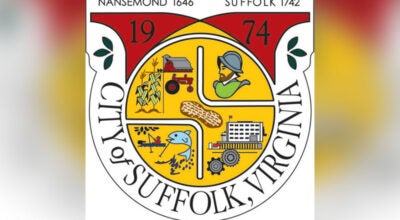Historic district plans reviewed
Published 10:03 pm Tuesday, July 2, 2019
A city consultant recommends clearer guidelines and no more regulation of paint colors in the city’s Historic Conservation Overlay District.
The Commonwealth Preservation Group outlined four areas of concern in all as it prepares an update to the Historic Conservation Overlay District guidelines.
“The process is unclear to folks who aren’t day-to-day users,” said CPG consultant Paige Pollard, who spoke to City Council at its June 19 meeting. “And the standards or expectations are unclear in the current guidelines.”
Another concern included money, which Pollard said cut across several areas.
“We did hear what we expected,” Pollard said, “which is concerns about the disproportionality in terms of the values of properties versus the investment required to maintain them.”
Pollard said stakeholders also talked about financial hardship issues and the interest in having supplementary grant assistance or a boosted real estate tax abatement opportunity.
Residents also feel there is a lack of information in the materials and guidelines in specific areas, the consultants said, and that some sections of the guidelines are too restrictive to accomplish the community’s vision and what is outlined in the Downtown Plan.
“A great example of an area that’s way too restrictive is the signage requirements, and also, the inability or the limitations in how one can implement public art and murals,” Pollard said.
There will also be a need to train Historic Landmarks Commission members and better educate everyone on the Historic Overlay District guidelines, Pollard said.
She noted that it received many concerns about the difficulties in navigating the process, so it sent what it termed a “secret shopper” to the city’s Planning Department, who submitted a pretend application and went through the process.
Pollard said CPG coordinated that with one member of the planning staff, but kept it confidential from everyone else on the staff to get a true experience.
“What we found there was that folks were friendly (and) they were helpful,” Pollard said. “But it’s very clear that applicants don’t understand, specifically, what they need to bring to the table, and specifically what tools are necessary to evaluate an application.”
She said by better articulating that and providing an example, the new guidelines would be able to address many of the concerns about the process.
CPG consultant Katie Paulson shared with council how the draft guidelines are much more graphic than previous versions and said it aims to be consistent throughout the document in how everything is presented and explained.
The new guidelines provide a Historic and Cultural Overlay District map, as well as an application and review flowchart, visually highlighting key points in the process. A chapter of the new guidelines is also devoted to alternative materials, as well as one that deals with signage, murals and public art. It will also have an appendix with references and resources for homeowners to use as they work through their projects.
“We really want it to be clear for all users,” Paulson said.
Councilman Mike Duman said what’s allowed for signage appears to be subjective as to what’s appropriate and what isn’t.
“The way we’re constructing the guidelines in general is that if your proposal is within the guidelines clearly — it’s articulated clearly and is not deviating from the guidelines — we’re trying to, in all cases, make that an administrative review,” Paulson said. “If there is any deviation or discretion, that’s where the appointed body come into play.”
She cited murals as an example. They’re setting up recommended size and location standards, but noted that it does not believe that the HLC’s purview extends to artistic content, and that another governmental body should review that instead.
Councilman Tim Johnson asked how the city’s current guidelines are different than those in surrounding areas.
“The fact that you still regulate paint color, that’s an anomaly if you look across the state,” Paulson said. “Most communities don’t, and one of our recommendations is that you stop doing that.”
The consultants interviewed 17 city officials, including Mayor Linda T. Johnson, Vice Mayor Leroy Bennett, other members of City Council, members of the Historic Landmarks Commission and city tourism officials. It also interviewed home and business owners in and out of the historic district, as well as members of Suffolk’s Premier Art, Retail and Cultural Initiative (SPARC), the Suffolk Art League and the Suffolk Center for Cultural Arts.
At a public meeting in March, more than 60 people attended, comprising a mix of residents and business owners, and it received 14 written surveys from the meeting.
Though outside the scope of the guidelines, CPG said it would monitor concerns with bridging community relations, cleanliness and activating downtown spaces for events and tourism.
CPG expects to review a pair of drafts to the guidelines by mid-September, and then hold a final public outreach meeting later that month before releasing final design guidelines by mid-October.
“I absolutely think we’re heading in the right direction,” Duman said. “What you presented is actually quite comprehensive and a lot more than I was anticipating. You brought up a lot of very, very good points.”
Pollard said once the guidelines are finished, Suffolk would be unique among localities in giving residents a clearer picture of what they actually are.
“We have been looking for a guidelines project in the community where we could take this very visual approach,” Pollard said, “and an approach that’s so focused on public outreach. … We think this is the wave of the future.”




